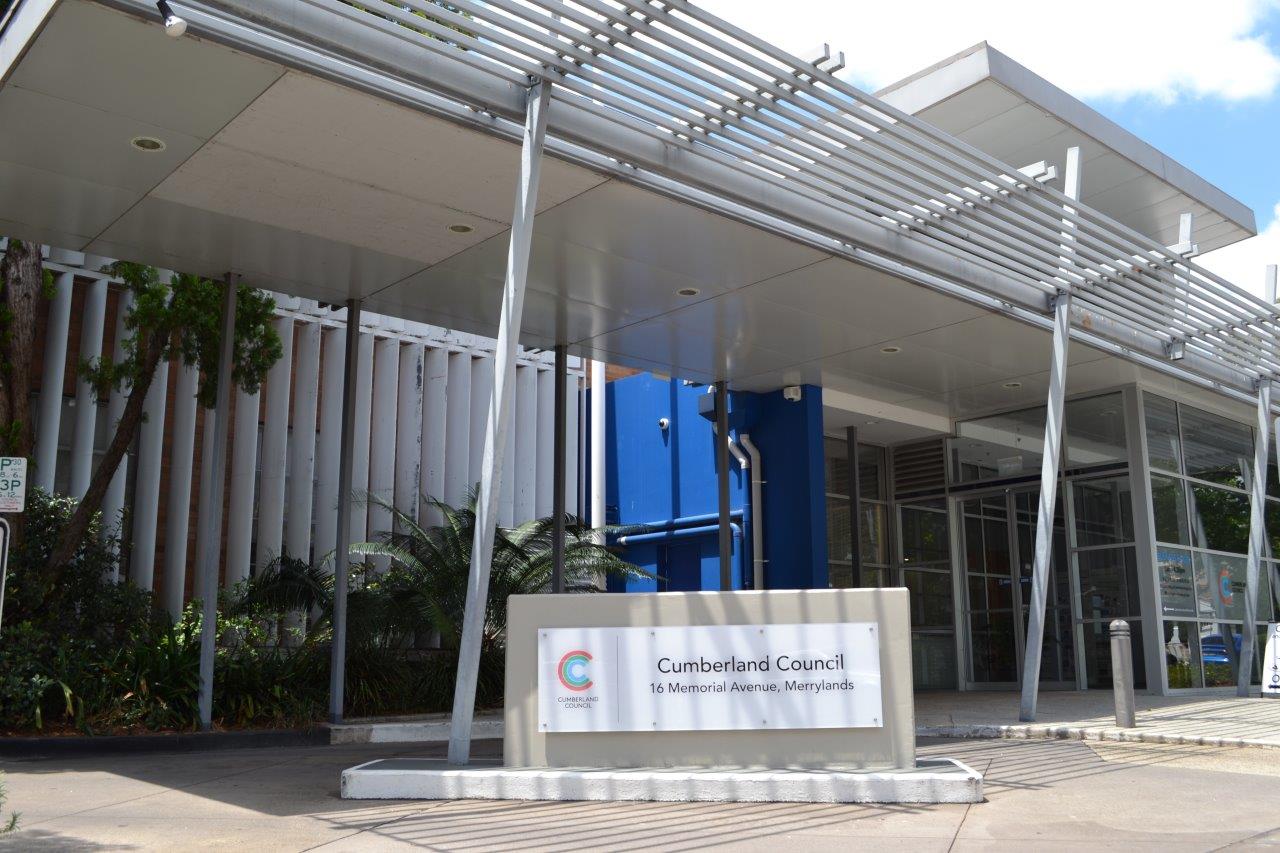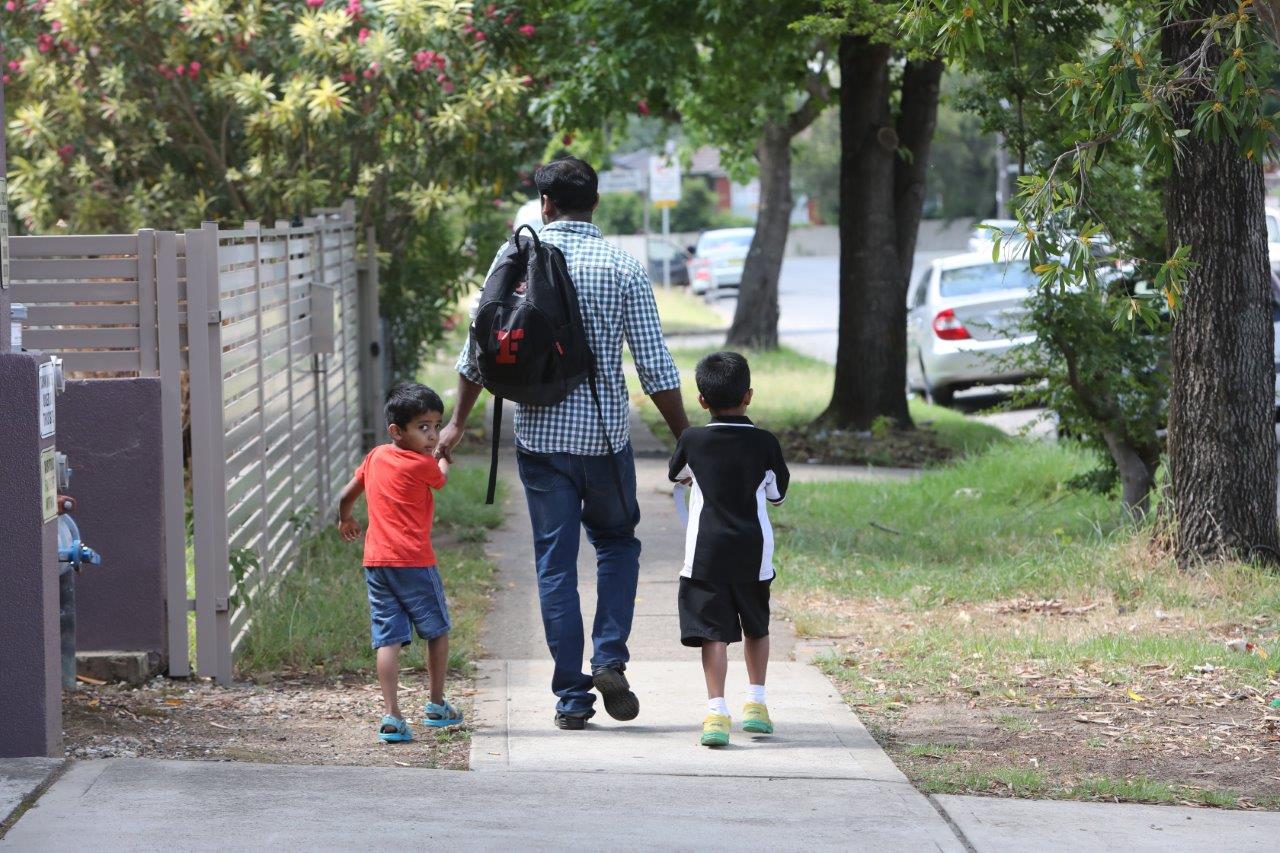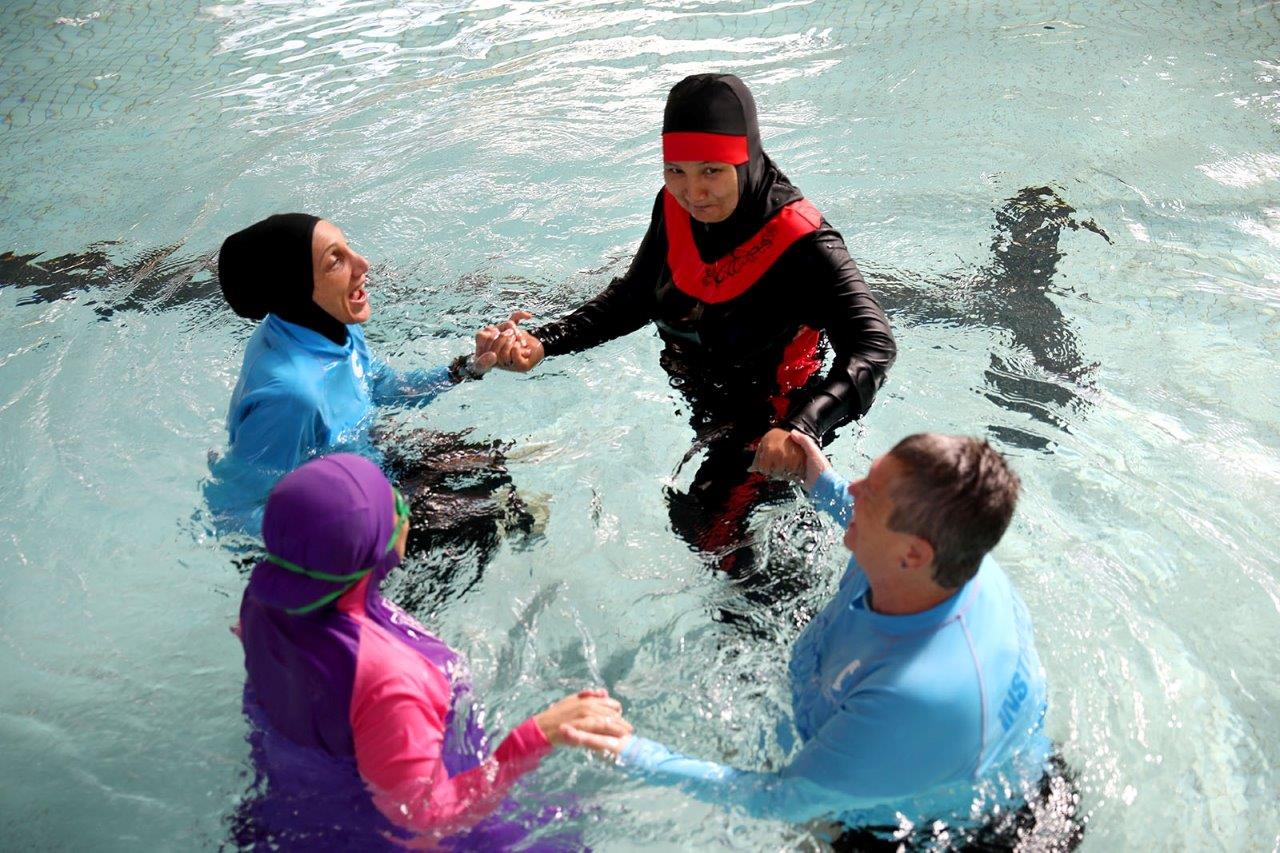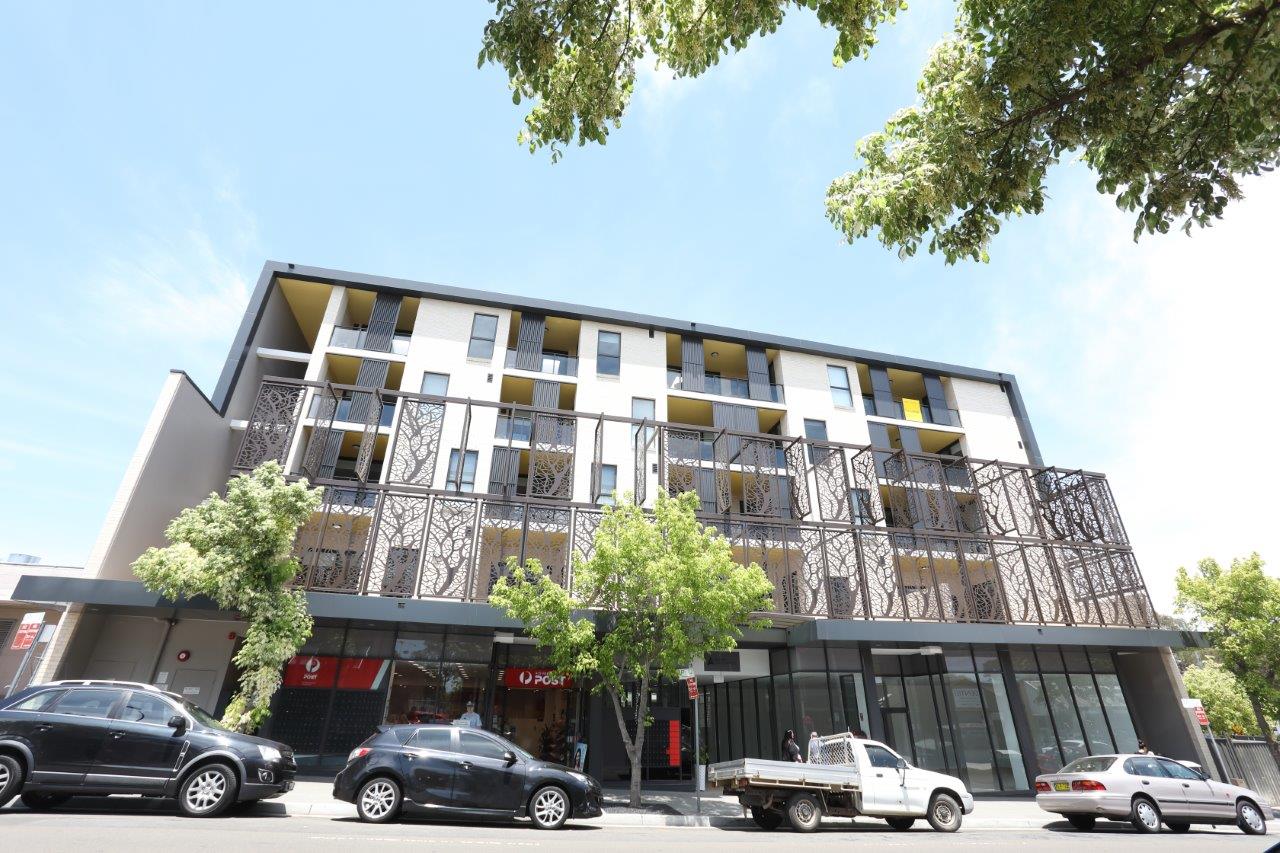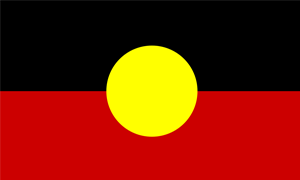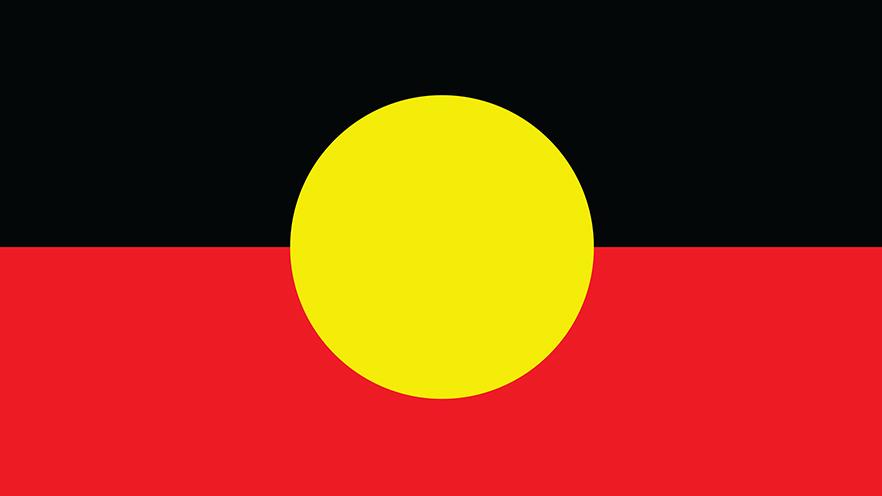
Indigenous flags
Aboriginal Flag
The black on the Aboriginal flag symbolises the Aboriginal people, the red represents the earth and the colour ochre, which is used in Aboriginal ceremonies. The yellow circle represents the sun.
- The Aboriginal flag should be flown at all times and at half-mast on Sorry Day.
- If the flag cannot be raised all the time, it should be raised on important Aboriginal calendar events such as Survival Day, Sorry Day, and Reconciliation Week and NAIDOC Week.
Torres Strait Islander flag
- Used for business relating to the Torres Strait Islander Community.
- The flag is emblazoned with a white Dhari (headdress) which is a symbol of Torres Strait Islanders.
- The white five pointed star beneath symbolises peace, the five major island groups and the navigational importance of stars to the seafaring people of the Torres Strait.
Flag Flying Protocols
The following information has been taken from The Department of Prime Minister and Cabinets’ ‘Australian flags - Part 2: The protocols for the appropriate use and the flying of the flag’ (PDF, 3.5 MB).
The flag order should follow the rules below, dependent upon the number of flag poles standing at locations:
- Australian National Flag (should always take precedence and be flown on the far left of the person/s facing the flags)
- New South Wales state flag
- Australian Aboriginal flag and/or Torres Strait Islander Flag in either order
(Source: Flying and Use of the Australian National Flag)
- When lowering the flag from a half-mast position it should be briefly raised to the peak and then lowered ceremoniously.
- The flag should never be flown at half-mast at night even if it is illuminated.
When flying the Australian National Flag with other flags, all flags in the set should be flown at half-mast. See Commonwealth of Australia, Australian flags - Part 2: The protocols for the appropriate use and the flying of the flag, 2006.
Recommended Practice:
- Both the Aboriginal flag and Torres Strait Islander flags should be flown on important Indigenous calendar events such as Sorry Day, Reconciliation Week and NAIDOC Week.
- During NAIDOC Week, Sorry Day and Reconciliation Week, the Aboriginal and/or Torres Strait Islander flags take precedence over the NSW State flag where only two flagpoles are available.
- They should not replace the Australian flag which will continue to be flown in the first flagpole in the position of precedence. Where there are 3 flagpoles, the Australian flag would be flown, followed by the NSW flag, followed by the Aboriginal or Torres Strait Islander flags.
Recommended Practice:
- Both the Aboriginal flag and Torres Strait Islander flags should be flown on important Indigenous calendar events such as Sorry Day, Reconciliation Week and NAIDOC Week.
- During NAIDOC Week, Sorry Day and Reconciliation Week, the Aboriginal and/or Torres Strait Islander flags take precedence over the NSW State flag where only two flagpoles are available.
- They should not replace the Australian flag which will continue to be flown in the first flagpole in the position of precedence. Where there are 3 flagpoles, the Australian flag would be flown, followed by the NSW flag, followed by the Aboriginal or Torres Strait Islander flags.
Special days for flying flags
May 26 - National Sorry Day
Sorry Day is recognised as a national day of commemoration and remembrance honouring the Stolen Generations. It recognises the pain endured through the removal of Aboriginal children from their parents. This policy was in place for multiple generations.
27 May to 3 June – National Reconciliation Week
National Reconciliation Week celebrates the culture and history of the First Australians.
- It focuses on reconciliation and explores new ways of meeting challenges in Indigenous communities.
- It occurs on the anniversary of the 1967 Referendum, which removed Constitution clauses that discriminated against Indigenous Australians. It ends on 3 June (Mabo Day) as the anniversary of the High Court decision in the Eddie Mabo land rights case of 1992.
Recommended Practice:
The Aboriginal and Torres Strait Islander flags should both be flown at half-mast on Sorry Day (26th May) and then fly them both at full for the duration of National Reconciliation Week (27 May to 3 June).
The first week of July (Sunday to Sunday) - NAIDOC Week
NAIDOC Week (National Aboriginal and Islanders’ Day Observance Committee) is held every year to celebrate and promote a greater understanding of Aboriginal and Torres Strait Islander peoples and culture.
Recommended Practice:
- The Australian Aboriginal Flag and the Torres Strait Islander Flag should be flown on additional flagpoles, where available, next to or near the Australian National Flag.
- If there is only one flagpole, the Australian Aboriginal Flag and the Torres Strait Islander Flag should not replace the Australian National Flag.
- If there are two flagpoles available, the Aboriginal Flag should be flown with the Australian National Flag.
Locations of Council-owned flag poles in Cumberland
- Merrylands Council Building (16 Memorial Drive, Merrylands)
- Auburn Council Building (1 Susan Street, Auburn)
- Auburn Memorial Park (corner of Rawson Street)
- Peacock Gallery and Artist Studio, Auburn Botanic Gardens (Corner of Chiswick and Chisholm Street, Auburn) - Note: 1 flag pole only
Understanding terminology
Aboriginal and Torres Strait Islander
Aboriginal and Torres Strait Islander cultures are very different. Each Nation has its own cultural language and traditions with their own histories, beliefs and values.
It is respectful to recognise both groups for their own identity.
When writing
- It is offensive to include a footnote to the word Aboriginal stating that ‘It includes both Aboriginal and Torres Strait Islander people’
- When referring to both cultures use the term ‘Aboriginal and Torres Strait Islander people’
- In all other circumstances, use Aboriginal people/s.
- Always capitalise the ‘A’ in for Aboriginal (in Australia)
- Lowercase titles refer to aboriginal or indigenous people in any part of the world.
Elders
An Elder is a member of a particular Aboriginal and/or Torres Strait Islander community, male or female, who is respected and has the authority within the community to give permission, advise others, and pass on knowledge.
Elders are usually the holder of traditional knowledge and customs and are the only people who have authority to talk about that knowledge or not, and to pass it on or not.
- An Elder is usually, but not always, an older person.
- Young people may also be given permission to talk on behalf of an acknowledged Elder not a ‘self-proclaimed Elder’.
- You must also be aware of addressing an Elder in the appropriate way.
- Some Elders are referred to as Uncle or Aunty, but you should only use these titles if given permission by them to do so. Asking politely is the best way to find out if you can do so or not.
Indigenous
- The term ‘Indigenous’ is generally used when referring to both Aboriginal and Torres Strait Islander peoples.
- ‘Indigenous’ is generally used by the Commonwealth Government as it has a charter of providing services and programs to both Aboriginal and Torres Strait Islander people at a national level.
-
The term Aboriginal refers specifically to the Aboriginal people of the mainland and Tasmania and does not include Torres Strait Islander people.
-
Many Aboriginal and Torres Strait Islander people are opposed to the term ‘Indigenous’ being used as it generalises both cultures. It is advised against using this term where possible.
Land Council
An Aboriginal Land Council is a community organisation separated by regions. These are state legislated and act as caretakers of the land on behalf of Aboriginal people.
- They are organised by Aboriginal people but (in some instances) they are not the Traditional Owners of the land they care for.
- They have advocated for recognition of traditional land rights, and the rights of Aboriginal and Torres Strait Islander people in other fields, including equal wages and adequate housing and basic human rights.
- Land Councils aim to provide employment, training and to explore business and community development opportunities for members.
- They can consider Aboriginal clan boundaries in their decisions.
Under the NSW Aboriginal Land Rights Act, the function of a Land Council is to “to improve, protect and foster the best interests of all Aboriginal persons within the Council’s area and other persons who are members of that Land Council”.
This includes:
- Protecting Aboriginal culture and the heritage of Aboriginal persons in its area
- Conservation and land management of Aboriginal sites and relics
- Protecting Aboriginal cultural heritage with other Government authorities by advising and educating the broader community about the significance of Aboriginal culture, heritage and sites.
Cumberland City Council falls within the Metropolitan Aboriginal Land Council.
Nation, Tribe, Clan and Mob
- These are all terms referring to a culturally distinct group of Aboriginal people associated with a particular, culturally defined area of land or country.
- A number of ‘tribes’ or ‘clans’ make up a larger group of Aboriginal people and are considered a ‘nation’.
- ‘Mob’ is used by Aboriginal communities as a generic term. Aboriginal people will often refer to themselves as being Koori, Goori or Murri. These are terms drawn from Aboriginal languages.
- ‘Koori’ is used by Aboriginal people in parts of NSW and Victoria. It mostly refers to the local Aboriginal community in Bega.
- ‘Goori’ is used by Aboriginal people in northern NSW coastal regions.
- ‘Murri’ is used by Aboriginal people in north-west NSW and Queensland.
Traditional Owners/Custodians
This term describes the original Aboriginal or Torres Strait Islander people who inhabited an area. Traditional Custodians today are descendants of the original inhabitants and have ongoing spiritual and cultural ties to the land and waterways where their ancestors lived.
